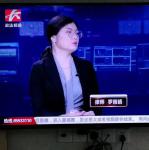Citation:
Hargobind Shake & Shingle Ltd. v. Golden Gate Land Co.,
2007 BCCA 109
Date: (略)
Docket: CA032071
Between:
Hargobind Shake & Shingle Ltd.
Appellant
(Plaintiff)
And
Golden Gate Land Co. & Associates Inc.,
K & D Farm Corporation, Eighty-Four Dev. Ltd. and
Mohinder Singh Gosal
Respondents
(Defendants)
Before:
The Honourable Mr. Justice Mackenzie
The Honourable Madam Justice Levine
The Honourable Mr. Justice Chiasson
Oral Reasons for Judgment
M. Lithwick
Counsel for the Appellant
F.R. Scordo
Counsel for the Respondents
Place and Date:
Vancouver, British Columbia
8 February 2007
[1] CHIASSON, J.A.: This action arises out of a loan agreement associated with a commercial warehouse development. The trial judge succinctly stated the core of the action in para. 1 of his Reasons for Judgment:
[1] In this action, the plaintiff, Hargobind Shake & Shingle Ltd. (“Hargobind”) claims repayment of a “cancellation fee” paid by it to the defendant K & D Farm Corporation “(“K & D”) as a term of a loan agreement (the “Loan Agreement”) between K & D and Hargobind, under which Hargobind was required to make that payment to K & D if Hargobind terminated the listing contract entered into with the real estate agency chosen by K & D. Hargobind claims:
(1) the provision in the Loan Agreement was a penalty, and not a genuine pre-estimate of damages, and thus is unenforceable;
(2) K & D breached the Loan Agreement itself, thus is not entitled to rely on the provision for a cancellation fee;
(3) payment of the cancellation fee was made under duress;
(4) the provision for payment of the cancellation fee was unconscionable, and should thus be set aside;
(5) the provision for the cancellation fee was in breach of s. 47 of the Real Estate Act, R.S.B.C. 1996, c. 397.
[2] The key provision of the Loan Agreement is para. 17. It states:
17. The Borrower acknowledges that the orderly and timely sale of the units in the Project is essential to the interests and security of the Lender and accordingly agrees that if the Borrower shall terminate the listing contract entered into with the real estate agency chosen by the Lender, the Borrower shall pay to the Lender as an indemnity as follows:
(a) if such termination takes place before sale of any of the units, the sum of SEVENTYU-FIVE THOUSAND ($75,000) DOLLARS;
or
(b) if such termination takes place after sale of any of the units, ONE-HALF, (1/2) of the product of the number of units remaining unsold times SIX THOUSAND THREE HUNDRED ($6,300.00) DOLLARS.
[3] There is serious conflict in the evidence of the parties. When considering whether the actions of the respondents Mr. Gosal and K&D Farm Corporation caused the appellant to breach the terms of the Loan Agreement, the trial judge discussed the evidentiary conflicts. (Para. 30)
[30] This issue turns largely on findings of fact as to what occurred. As noted above, I have difficulty in accepting either party’s version of the events leading up to payment of the “cancellation fee”. I consider it likely that Mr. Sumbal, and the other members of his family, were very concerned about the financial viability of the project, as interest was continuing to accrue on the K & D loan at the rate of 15% per annum, and only one unit had sold. I accept their evidence that they made demands upon Mr. Gosal to make further efforts to sell the units. I also accept that he resisted those efforts, likely on the basis that he had done everything he knew of to attract prospective purchasers, with little success. However, I do not accept the evidence that he threatened, if Hargobind refused to cancel the listing agreement, to make no further efforts to sell the properties. That suggestion is not in accordance with what is reasonable. The effect of that would be that Mr. Gosal would not only earn no further real estate commissions, but he would also put at jeopardy the funds advanced to the Project by his family ventures. I accept his evidence that it was Mr. Sumbal, rather than himself, who wished to terminate the listing agreement. That does accord with reason: Mr. Sumbal was not satisfied with the efforts being made to sell the units, and wished to hire someone else to attempt to sell them. I find that Mr. Gosal prepared the first Cancellation Form of the Multiple Listing Contract, dated September 27, 1991, which was not executed, as well as the letter of October 9, 1991, and the Cancellation Form of the Multiple Listing Contract, dated October 9, 1991, which was executed, on that basis. The letter of October 9 is addressed from K & D to Hargobind, and, as originally drafted, provided that Hargobind wished to be released from the listing agreement. Notwithstanding the change in the letter, initialled by both Mr. Sumbal and Mr. Gosal, from “You” to “I” (thus referring to K & D as the party wishing to be released from the agreement), read as a whole, the intent of the letter is to “constitute full satisfaction of mutual obligations under clauses 15, 16 and 17 of the Loan Agreement”. As noted, that amount is payable only in the event of cancellation of the listing agreement by Hargobind. It thus cannot be said that there was a “breach” of the Loan Agreement; rather there was a payment under the terms of the Loan Agreement upon the happening of an anticipated event.
[4] The trial judge discussed the law related to duress, unconscionability and unjust enrichment, and undertook a detailed analysis of the facts related to that law. He also dealt with s. 47 of the Real Estate Act:
47 (1) A person must not maintain an action in any court for the recovery of compensation for any act done or expenditure incurred by him or her as an agent or salesperson without proving that the person was licensed under this Act as an agent or salesperson at the time the alleged cause of action arose.
(2) This section does not apply to an action brought against a licensed agent by an agent duly licensed or otherwise authorized by law as such in a jurisdiction other than British Columbia for the recovery of any commission or other compensation, the payment of which is not prohibited by section 40.
[5] Most troubling of the issues before the Court was the provision for the payment of the $75,000 in the context of the law of penalty. The appellant says that the provision is not a genuine pre-estimate of damages because the amount was established by reference to the potential quantum of commissions to be earned by Mr. Gosal to which the lender legally was not entitled. That is, the lender would not suffer the loss of commissions.
[6] The judge referred to the authorities that concern this issue, which are Dunlop Pneumatic Tyre Co. Ltd. v. New Garage and Motor Co. Ltd., [1914] A.C. 79 and the decision of this Court in Prudential Insurance Co. v. Cedar Hills Properties Ltd. (1994), 100 B.C.L.R. (2d) 312 (B.C.C.A.). He quoted from page 316 of that decision and I refer to sub-para. 3 in the quotation:
The question whether a sum stipulated is penalty or liquidated damages is a question of construction to be decided upon the terms and inherent circumstances of each particular contract, judged of as at the time of the making of the contract, not as at the time of the breach
. . .
[7] Mr. Gosal did relate the $75,000 levy to the quantum of his commission. I refer to his evidence:
in chief
Q. How does the $75,000 figure, how --- I’m sorry – how was that $75,000 figure arrived at?
A. It’s – I guess the project was listed. I don’t remember then. But I guess 2.3 or 2.4 million.
Q. I think it was 2.4 million something?
A. So 7 percent commission of that would be whatever the amount, and that’s basically the listing commission comes close to $75,000
and under cross-examination:
Q. The $75,000, the way that figure was arrived at, was by looking at the commissions which would not have been earned by you, if the listing was cancelled?
A. Of course I would charge that commission to whatever K & D would receive from – from this particular project we’re talking about.
[8] The trial judge took this evidence into account in his consideration of para. 17 of the Loan Agreement. His discussion of the evidence and contractual provisions is found at paras. 27 & 28 of his Reasons for Judgment:
[27] The essence of the submissions on behalf of the plaintiff is that the provision is a penalty clause because K & D is not entitled to payment of any commission; the amount payable is based on the commission that would be payable to the listing salesperson; and thus the amount payable is greater than the greatest loss that could conceivably have been suffered by K & D (as distinct from Mr. Gosal), as a result of the cancellation of the listing agreement. However, I consider that to be a misconstruction of paragraphs 15 to 17 of the Loan Agreement. The loss to K & D is not the loss of the real estate commission, but rather the loss of control over the marketing of the units. In light of the funds it agreed to advance under the Loan Agreement, K & D quite properly would have an interest in ensuring “the orderly and timely sale of the units”. It is also relevant to this matter that Hargobind had relatively little equity in the property, or other funds from which repayment of the loan could be made, so that repayment would be made from the proceeds of sales of the units. In this case, the defendants may have a second interest, in ensuring payment of real estate commission to Mr. Gosal. However, that does not detract from the interest of K & D in having some control over the marketing of the units, so that it could ensure that its loans were repaid. To advance that goal, under paragraph 15, Hargobind granted K & D the exclusive right to manage the marketing and sale of the units in the Project. In order to do that, under paragraph 16, K & D was entitled to choose the listing real estate firm. To lose that choice did represent a loss to K & D (in addition to the potential loss of real estate commissions by Mr. Gosal). However, it would be very difficult to quantify that loss; that would depend on the diligence of the new listing agent, as compared to that appointed by K & D, in this case, Mr. Gosal. Nor does the fact that the “indemnity” payable is equivalent to the potential loss of real estate commission by Mr. Gosal convert it into a penalty. Rather, this is the situation referred to at the end of Lord Dunedin’s quote where it is impossible to make a “precise pre-estimation” of the potential loss to K & D. Further, the amount provided is not a single lump sum “on the occurrence of one of more or all of several events, some of which may occasion serious and others but trifling damages”. Rather, this provision provides for a payment on a single event, the cancellation of the listing agreement, but provides a sliding scale, depending on the number of units sold. Thus, if a number of units were sold, thus presumably reducing the exposure of K & D as a result of partial repayments of the loan, the amount of the “indemnity” is reduced. Thus, in this case, the amount paid was $70,000 plus G.S.T., less than the amount payable if the termination took place before a sale of any of the units (and, in fact, less than the amount payable under paragraph 17(b) of the Loan Agreement, by my calculation).
[28] For those reasons, I am satisfied that paragraph 17 of the Loan Agreement is not a penalty clause.
[9] The trial judge summarized his conclusions in paras. 53 and 54 of his Reasons:
[53] In conclusion, despite my considerable scepticism about some of the evidence of Mr. Gosal, I find that there is no basis put forward upon which Hargobind is entitled to repayment of the cancellation fee paid by it, pursuant to paragraph 17 of the Loan Agreement. I am not satisfied that the cancellation fee is a penalty. I am also not satisfied that either Mr. Gosal or K & D caused Hargobind to breach the term of the Loan Agreement with respect to the listing agreement, thus disentitling the defendants from relying on that term. I am also not satisfied that the cancellation fee was paid by Hargobind either under duress or as a result of compulsion of urgent and pressing necessity. I do not consider the retention of the cancellation fee by K & D to be either unconscionable, or amounting to an unjust enrichment, in view of the fact that it is pursuant to an express term of the Loan Agreement to which Hargobind agreed. I also do not find the provision in the Loan Agreement for payment of the cancellation fee to be the payment of a “commission” to K & D, such that K & D would be unable to maintain an action to recover it as a result of s. 47 of the Real Estate Act.
[54] In all those circumstances, the claims must be dismissed.
[10] I note that not all of the issues referred to the trial judge were addressed on this appeal. Referring to paras. 57 & 58 of the Appellant’s Factum, the issues on appeal concern whether the $75,000 requirement was a penalty and relate to allegations of economic duress and breach of the loan agreement.
[11] The trial judge identified problems with the evidence of both parties in paras. 15 – 21 of his Reasons. He began this discussion is para. 15:
[15] I have considerable difficulty with respect to the credibility of the evidence tendered on behalf of both parties in this case.
[16] Mr. Gosal claimed to have no interest, either direct or indirect, in either K & D or Golden Gate. With respect to K & D, he said his son Kaviraj is the beneficial owner of 60 of the issued shares, and that he holds the other 60 shares in trust for his son Dilraj. He said all shares in Golden Gate are held by his wife Harbhajan. However, as noted above, all dealings Mr. Sumbal had with either company were with Mr. Mohinder Gosal. It was Mr. Gosal who instructed counsel to prepare the Loan Agreement; it was Mr. Gosal who negotiated the contracts for the construction of the warehouse; it was Mr. Gosal who dealt with Mr. Sumbal with respect to cancellation of the listing agreement. I find that he acted as the manager and operating mind of both companies. Mr. Gosal perceived that there was a potential conflict between him acting as the manager of companies which were providing financing for the project, and him acting personally as the listing real estate salesperson. That was acknowledged by him in the course of his evidence. He thus tried to insulate his position as manager of K & D and Golden Gate from his position as the real estate salesperson. To suggest that he has no interest in those companies, however, is disingenuous. The truth of the matter is reflected in his answers, in direct examination, with respect to the suggestion that he regarded the project as “mickey mouse”, in which he said it was “the biggest investment we had done in one project, almost 1.7 million dollars of our life earnings …”. I consider that reflects the true state of affairs: even though the shares may be held by, or on behalf of, his sons or wife, for income tax or other reasons, the companies were family ventures operated by Mr. Gosal.
[17] I also do not accept Mr. Gosal’s evidence that he never attended the “community meeting”, at which he was urged to make greater efforts to sell the units in the development. In that regard, I prefer the evidence of Mr. Pavittar Sumbal, Ms. Kulwinder Pattar, Mr. Daljinder Sumbal, and Mr. Bhupindar Uppal, all of whom gave essentially consistent evidence of what occurred at that meeting, and of Mr. Gosal’s presence at it.
[18] I also do not accept Mr. Gosal’s evidence that, at the time the Loan Agreement was entered into in March, 1991, it was not already known that the real estate firm to be chosen by K & D would be Lakeview Realty Ltd., with Mr. Gosal as the listing salesperson. That was conceded by counsel for the defendants in submissions, that both parties knew Mr. Gosal would provide the real estate marketing services. That being the case, paragraph 16 of the Loan Agreement, suggesting that K & D would “choose the listing real estate firm” was a sham.
[19] There is other evidence which results in questions with respect to Mr. Gosal’s credibility, such as his inclusion of the statement that 15% of the units were sold on the brochure prepared to advertise the development, which clearly was not true, and his statement in his affidavit filed August 2nd, 2000, that Mr. Sumbal was “well versed and experienced in the construction and development industries”, which was known by him not to be true.
[20] On the other hand, there are aspects of the evidence on behalf of the plaintiff which raise serious concerns, particularly with respect to the circumstances surrounding the payment of the cancellation fee. Harking back to the statement of O’Halloran J.A. cited above, the truth of the story must be tested against what is reasonable in all the circumstances. In this case, it makes no sense that Mr. Gosal would want to give up control of the marketing of the units, when the companies owned by his family had a substantial financial commitment in the development. The reasons Mr. Gosal purportedly gave for wishing to do so, that he considered it a “mickey mouse” project, and that he did not wish to drive from Surrey to Abbotsford, also make no sense – particularly in light of the evidence that this was the first and only commercial property which he had listed, and that he only had one or two other residential properties listed.
[21] Of more significance, I do not accept the evidence on behalf of the plaintiff of the financial pressure Mr. Gosal was allegedly exerting. In his direct evidence, Mr. Sumbal said that at the meeting on October 9, 1991, when the cancellation fee was paid, that Mr. Gosal threatened that if he did not pay that fee, that he would foreclose on the Project, and on the houses of Mr. Sumbal, his daughter, and his friends who had put up their houses for security. However, neither his daughter, Kulwinder Pattar, nor his son, Daljinder Sumbal, who were both present at that meeting, gave evidence of any such threat. In fact, Daljinder indicated that the first time the word “foreclosure” was used, according to his notes, was on November 9, 1991 (although that was based on information provided to him, as he was not present when the alleged threat of foreclosure was made on that date). I accept that Mr. Sumbal did feel under considerable financial pressure at that time, as interest was accruing on the K & D loan at the rate of 15% per annum, only one sale had taken place, and not only his home, but also those of his daughter and friends had been provided as security for the loans. However, I do not accept that financial pressure was as a result of threats or demands made by Mr. Gosal. Before the meeting on October 9, 1991, $906,818.78 had been advanced by K & D, but $257,547.27 had been repaid. $300,000 had been advanced by Golden Gate. There were also amounts due to the contractors for work on the project, and to others who had made loans. However, by that time, Westminster Credit Union had provided a commitment for a loan of $1,000,000, on which interest only was payable until November 1, 1992. In addition, there were further funds available under the Golden Gate loan, with interest only payable until September 1, 1992.
[12] A trial judge is entitled to accept or reject evidence and a court of appeal will not interfere with the exercise of this authority in the absence of palpable and overriding error. The conclusions in this case essentially are factual. I am not satisfied that the trial judge was wrong in his conclusions or that he committed any palpable or overriding error.
[13] I would dismiss this appeal.
[14] MACKENZIE, J.A.: I agree.
[15] LEVINE, J.A.: I agree.
[16] MACKENZIE, J.A.: The appeal is dismissed.
“The Honourable Mr. Justice Chiasson”
==========================================================================================
为尽量避免给当事人造成不良影响,经当事人本人申请110.com将对文章内容进行技术处理,点击查看详情。
==========================================================================================











